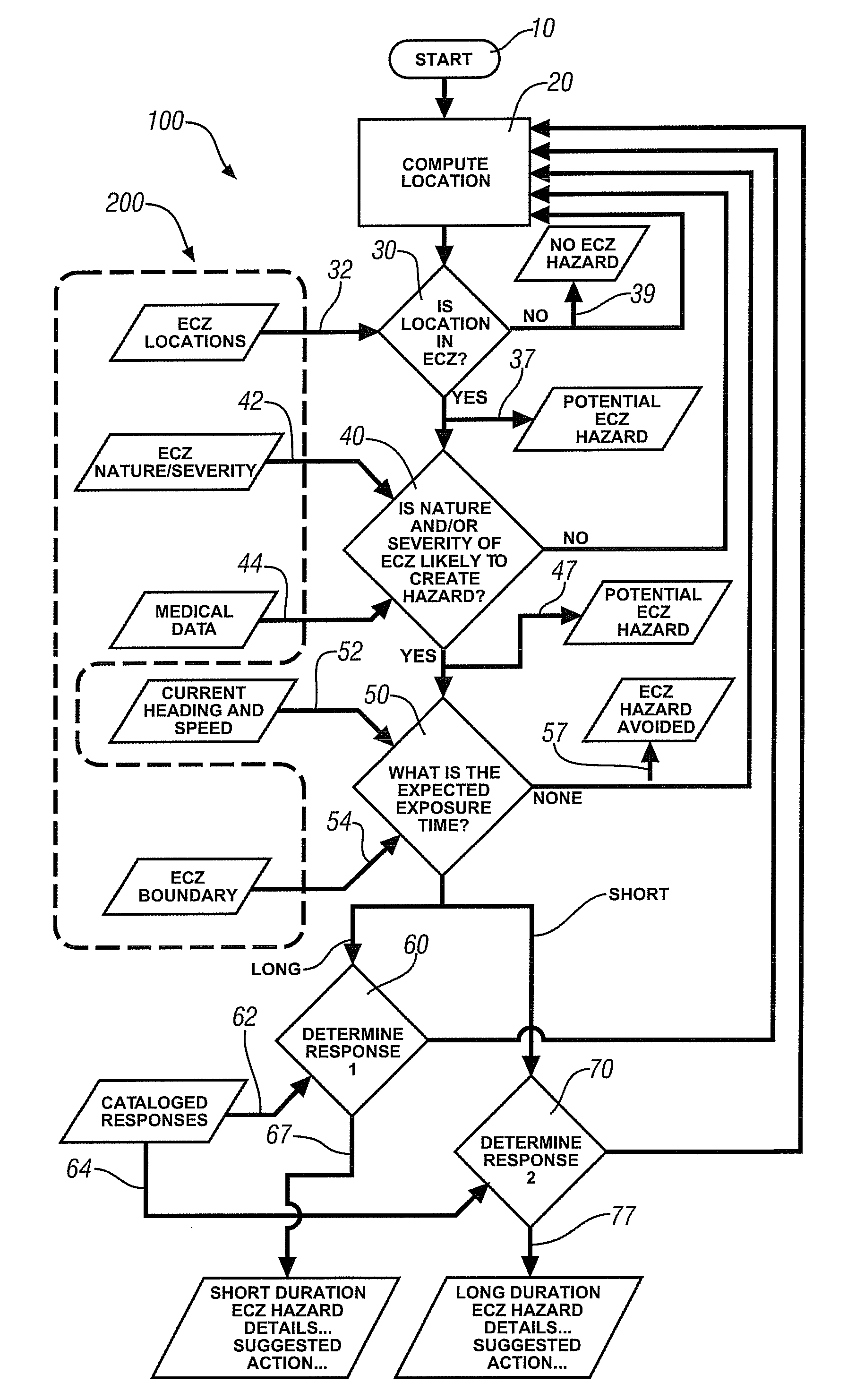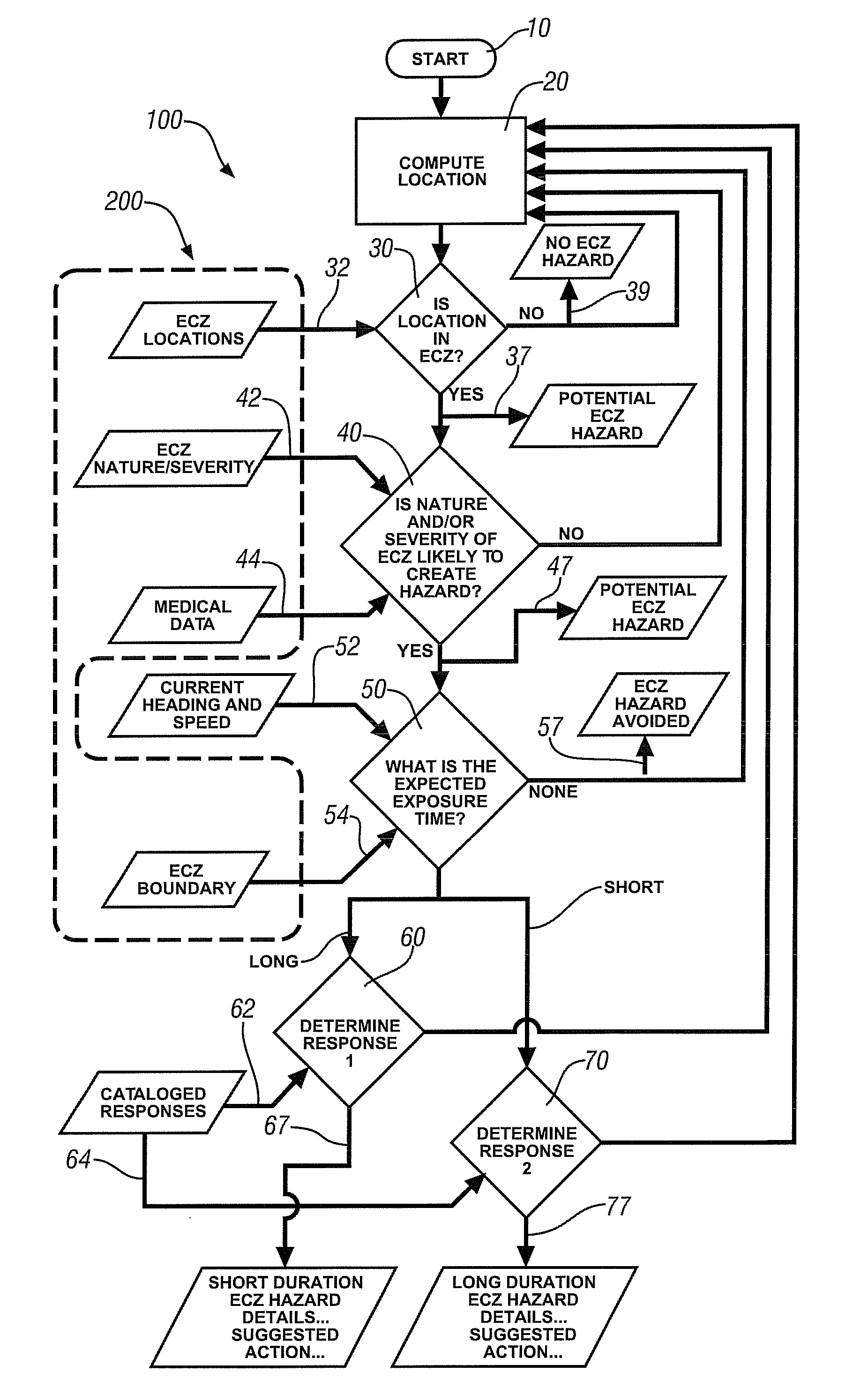Identification assessment and response to environmental conditions while in an automobile
a technology of environmental conditions and identification assessment, applied in the direction of vehicle position/course/altitude control, process and machine control, instruments, etc., can solve the problem that the automatic response could also be overridden by the operator
- Summary
- Abstract
- Description
- Claims
- Application Information
AI Technical Summary
Benefits of technology
Problems solved by technology
Method used
Image
Examples
Embodiment Construction
[0018]Vehicles in use encounter other than ideal environments on a regular basis. Many of these environmental conditions are transitory and pose no more than a minor inconvenience for the vehicle occupants. However there are conditions which may persist for a considerable time and which may pose a greater inconvenience, hazard or threat to the vehicle occupants, particularly occupants with specific medical conditions and allergies. Clearly it would be beneficial to integrate knowledge of such environmentally-challenging zones with knowledge of a vehicle's current and projected location to enable some timely remedial action to mitigate any potential ill-effects of exposure to such environment.
[0019]Practice of the invention requires near-continuous real-time knowledge of vehicle position. This may be obtained with a stand-alone GPS unit; a GPS unit integrated with another electronic device such as a cell-phone or other mobile communication system or Personal Digital Assistant and cap...
PUM
 Login to View More
Login to View More Abstract
Description
Claims
Application Information
 Login to View More
Login to View More - R&D
- Intellectual Property
- Life Sciences
- Materials
- Tech Scout
- Unparalleled Data Quality
- Higher Quality Content
- 60% Fewer Hallucinations
Browse by: Latest US Patents, China's latest patents, Technical Efficacy Thesaurus, Application Domain, Technology Topic, Popular Technical Reports.
© 2025 PatSnap. All rights reserved.Legal|Privacy policy|Modern Slavery Act Transparency Statement|Sitemap|About US| Contact US: help@patsnap.com


